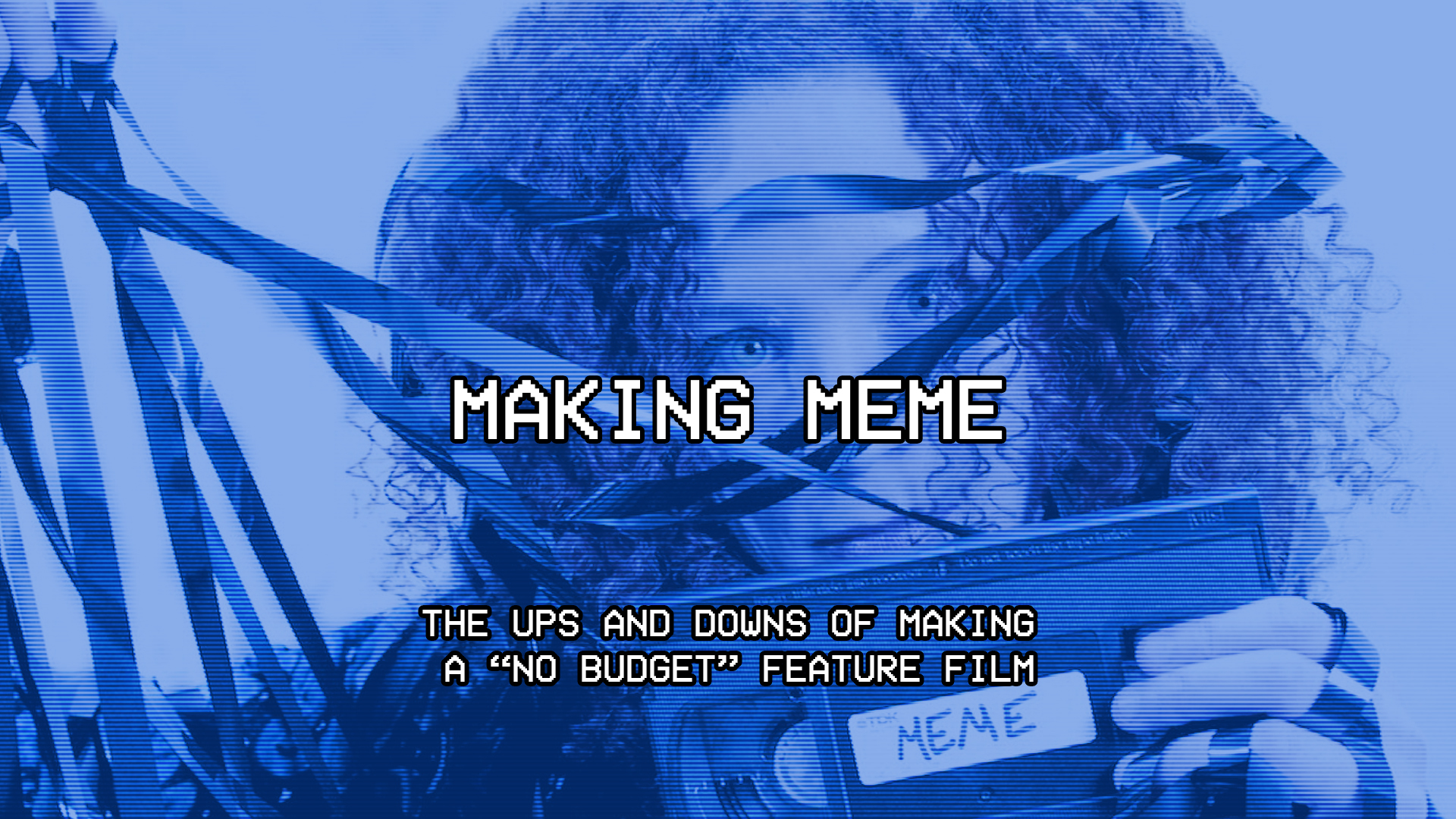Meme is Now Available to Watch on AppleTV, Amazon, and from 4MileCircus
“Making Meme” is a series of blog posts about the long process of taking a project from an idea to a completed feature film. I made a lot of mistakes on the way and learned a lot of lessons, but I also had a lot of fun and got to work with a lot of wonderful people throughout the process. These posts are presented in the hopes of helping others in their struggles to make a film.
– Sean Mannion, Writer/Director, Meme
Read this series in order from the beginning
Following the realization that the film just wasn’t working as well as it could when presented as a linear narrative Carolyn and I set forward a plan to rethink the narrative. The story wouldn’t change, but the way it was presented would. This ultimately brought the film closer to the original vision, which I had strayed from over the course of pre-production and production of the film.
I wrote every scene on a notecard and identified (and color coded) the plots and subplots they were a part of. This was taking a common screenwriting technique for visualizing story and just moving it over into post production. This helped us to just look at the film and we could then rethink it and be very hands on in the rearrangement.

I put all of the cards up on the wall in script order. Then, Carolyn joined me and we started to look at presenting the story not in a linear fashion in terms of when events occurred in time, but in a sense of the emotional evolution of the film. The major plots became blocks of scenes in the new approach. They would build an idea that might ultimately resolve in another block later on but scenes would be grouped. We also chose to split some scenes up and repeat others that worked across multiple blocks of our scenes.
From there we started to add in ideas about additional material we had that could intercut with the scenes. Sometimes this was a clip from the “Meme” tape in the film our main character, Jennifer, was obsessed with. Sometimes this was a clip from a beer commercial or Beneath the Black Moon. Then we started to think about the finale and the tape Jennifer was making at the end as well as using important emotional beats from scenes to underscore other moments. Those beats and intercut scenes were represented with sticky notes. In the end we came up with a new structure to start with and even had put three scenes aside as likely to get cut.


Then came time to actually edit the new version of the film. I took the cards and turned them into a list and I went through and reassembled the film in that order. That wasn’t the end of the process though. Our notecard edit was a starting point. As we started to fit the pieces together in their new configuration they had to be refined to flow in that order. I watched a lot of films with non-linear or semi non-linear editing to get inspired during this process. Some of those films included The Limey, Pink Floyd’s The Wall, The Man Who Fell to Earth, and Speed Racer.

Pink Floyd’s The Wall specifically served an interesting role in the editing process early on in this revising of the film. I had not seen the film before and as I was working on my edit I took advantage of an opportunity to watch it finally. I watched it a few times during this post production process. At one point, I pulled the audio track from the movie and laid it under my rough cut and made some adjustments to cut Meme, as it was at the time, to the audio track for The Wall. As I recall “Mother” came in right around the break up scene at the mid-point of the film. It wouldn’t line up at all now, but it was an interesting way to step outside of the film itself for a minute and look at it in a new way.
The editing process took quite a bit of time. Carolyn and I went back and forth on several scenes and several sequences. One of the best parts of the process we had was Carolyn was always behind trying something weird or new. She would tell me in a straight forward way when she didn’t think something was working. It was good to have the second brain helping me work through this process.

The biggest decision we made in post production was changing the ending of the film. We didn’t change the action or the outcome but we made the choice to change the content. At the end of the film our main character Jennifer has moved on from trying to find who created the mysterious “Meme” videotape to creating a videotape of there own. Originally this had a voiceover that literally synthesized multiple concepts from the film into a single thread. It was too on the nose and a bit boring. So, I rewrote it to be more of a fairytale or allegory that explored the ideas and reinforced some of the imagery through the film. It was a significant improvement.

As the rough cut came together it came time to actually make the call on a few things. Namely, exactly how much of the mysterious “Meme” videotape would show on screen and then how much of Jennifer’s own video would show in the finale with her voiceover. In addition to how much to show, I had to finally settle on the actual contents of the tapes beyond some of the things we shot as part of production. I did some storyboarding and some brainstorming. Finally, I settled on adding animation to the mix.
Meme has more VFX and animation than one would expect for a relatively simple relationship drama that focuses on VHS. In the next installment, I’ll address those elements that were needed to finish the film as well as the lengthy audio post production process.

